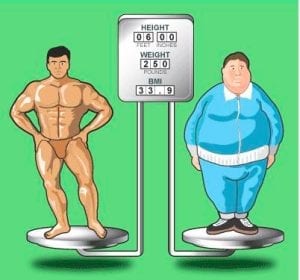It’s easy for those of us who live in North America to take an essential part of our daily diet for granted. I’m referring to water, which IS a food; and the most important one at that.
Potable water isn’t a problem here but the rest of the world does have a problem and nothing underscores it more than the images we see on television from the long lines in African countries waiting to receive water from relief workers.
We can live for about 3 months without other foods but will last only about 10 days without water. Next to the air we breathe, water is second in importance for life. Yet, statistics have been presented to estimate that 75% of Americans are dehydrated and some estimates say that this is also true for about 50% of the world’s population based on the modern societies and our eating habits which include high amounts of soda pop, prepared vs. fresh foods and our fast food mentality.
Today, more than ever, people are beginning to understand the essential nature of water as a critical element of our daily diet. And, as in the case of air, there are two important considerations, the volume consumed, and the quality of the water
Volume requirements for water
There is a general guideline that suggests we should consume approximately one half of our body weight in ounces of water each day. Thus a 200 pound man would consume 100 ounces (slightly more than 3 quarts) and a 100 pound woman or child would consume 50 ounces (somewhat less than 2 quarts).
This may seem to be an excessive amount of water, but depending on each individual situation it is a good starting point. Factors that affect the daily volume of water include: diet, activity, age, relative humidity of the environment, and overall health.
People eating a predominantly vegetarian diet are in fact consuming more water, where as people eating high protein and fat diets need more water to completely metabolize these nutrients. High protein diets deliver high nitrogen loads to the bloodstream and thereby stress the kidneys and liver which require more water to do their work.
When one is exercising or living in a low humidity area such as Arizona, the sweat and insensible water losses may require even more water than half the body weight in ounces of water.
So how can one know roughly what their water needs are? The first thought may be thirst will let me know. Sounds simple, however there is published data showing that people can be dehydrated up to 4% of their bodyweight before feeling thirsty! And that’s a problem – A mere 2% drop in body water can trigger fuzzy short-term memory, trouble with basic math, and difficulty focusing on the computer screen or on a printed page. Part of the overall problem here is that the body compensates and tolerates dehydration quite well for a period of time.
In addition, if one is more accustomed to drinking other beverages and especially flavored beverages, there will be no appetite for water. As one consumes more plain water, an appetite for water can be developed and it often becomes the beverage of choice. Try it your body will thank you in the long run.
How Can You Tell?
There are several ways to easily predict the state of hydration:
- Simply look at the volume and clarity of your urine, low volume and dark color suggests dehydration, high volume and very clear urine indicate possibly too much water.
- You can buy specific gravity tapes at a pharmacy and check numbers until you are comfortable at estimating. Specific gravity of 1.005 is dilute or nearly pure water, this suggests over-hydration or consumption of caffeine or alcohol, these drugs make the kidneys secrete nearly pure water (specific gravity 1.000). On the other hand a specific gravity of 1.015 or greater is suggestive of dehydration. An acceptable range would be between these two and variations will occur throughout the day.
- There are also devices which are now relatively inexpensive known as electrical bio-impedance devices that measure skin resistance electrically and give a good approximation of total body water, intracellular water, extracellular water and the lean muscle to body fat ratio. This information has been shown to be helpful in monitoring many disease conditions as well as the hydration status.
Many may wonder what is so important about drinking more water. There is much written about it (see Mediscuss.org) in more detail than will be presented here but here are a few:
Water is essential for helping to maintain intracellular hydration, redox potential, and pH in an acceptable range, without which there will be lowered enzymatic activity, decreased mitochondrial function with lower energy production – all leading to cellular dysfunction.
In addition, dehydration does not supply enough free water to the kidneys to allow them to secrete toxins efficiently. Therefore toxins are not removed from the body in a timely and efficient fashion leading to storage of the toxins in various tissues to be dealt with later.
Similarly, if one is chronically dehydrated, the colon will extract more water from the bowel movement leading to possible constipation and the associated consequences such as diverticulosis and cancer of the colon. So in summary, pay attention to your water intake if you wish to maintain optimum health and avoid disease.
Where We Get Our Water
Obtaining quality water would seem to be an easy matter, however, there are different types of water:
Tap Water:
Many people assume that when they turn on their kitchen tap, they are getting clean, safe, healthy drinking water. Unfortunately, that is often not the case. Regardless of the origin of the tap water, it is vulnerable to a number of different types of impurities.
Leaching from pipes may give the water dangerous levels of cooper, iron, zinc and arsenic. Other undesirable substances found in water, include radon, fluoride, and cooper, and other heavy metals.
Other contaminants, such as fertilizers, asbestos, cyanides, herbicides, pesticides and industrial chemicals may leach into ground water through the soil, or into any tap water from plumbing pipes. The water may leave the municipal supply in good condition, but these leaks or loose fittings in pipes along the way can contribute to the unhealthy condition of the water when it reaches us.
Other substances including chlorine, carbon, lime, phosphates, soda ash, and aluminum sulfate, which are intentionally added to public water supplies to kill bacteria, adjust pH, and eliminate cloudiness.
Flouride, a common addition to our drinking water, is yet another enemy of magnesium., it can change it into an unusable compound that is rejected as a waste product. Ironically, this flouride is supposed to protect our teeth against decay, yet it results in loss of one of the very minerals our teeth need for the hard enamel that keeps them from decay. Much of our tap water is a chemical soup these days, so for more reasons than simply flouride content, drinking pure spring water or purified water through a household filter might be a good idea.
Chlorine used as a disinfectant to rid water of harmful bacteria, combines with naturally occurring organic matter to form trihalomethanes – compounds suspected of contributing to cancer – these too can be filtered out with the proper system.
Many of us are now familiar with the calamity back in 1993 when over 400,000 people became ill after drinking water that still contained cryptosporidium despite the fact it had been processed by the Milwaukee municipal water treatment facilities – 104 people died as a result. We can’t just believe that problems won’t occur in our drinking water – I don’t believe in being an alarmist, but things can and do happen in processing that may put you and me at risk. I filter all of my drinking water at home and have for years – caution is the best position to take in order to minimize risk.
Impure Water:
What is your drinking water like? Is it free of toxic metals? Is its mineral content well balanced? Is it free of micro-organisms?
Bottled Water
Twenty years ago you and I could have made a safe bet that no one in this country would be crazy enough to spend at least a dollar for a bottle of water when it is practically free at home!! Yet today it is the fastest growing category of beverages and even all of the major soda manufacturers have water divisions – just look at the water aisle in your favorite supermarket. You may end up on more than one aisle – the variety of water products, from spring water to distilled to sparkling and flavored brands, is on the increase.
Bottled water can be classified by use – a basic drinking water or a specialty beverage; by its source – spring, well water, or public water supply; and by the presence of carbonation. Read the labels of any bottled water you buy. You may find that the bottle of “spring water” you bought actually came from a municipal water supply.
The United States FDA truth-in-labeling requirements are clear, nonetheless, some bottlers still make erroneous claims.
Bottled water is required to meet the same quality standards and purity standards as public drinking water. FDA guidelines for imported waters require that the water be obtained from sources free of pollution, bottled under sanitary conditions, free from microorganisms. Bottled water generally, but not always, have fewer contaminants than tap water because of different purifying methods employed along with filtration and aeration. Ozone is used in bottled water instead of chlorine as a disinfectant. Unlike chlorine, ozone does not combine with organic material to form triholomethanes, nor does it have an aftertaste or odor that occurs with chlorine.
For health’s sake, make sure that the water you drink is as pure as you can get and if you haven’t already done so – consider investing in a quality filter system for your tap water at home – your most economical and safest bet!!






Be the first to comment on "Water – A Misunderstood Food"